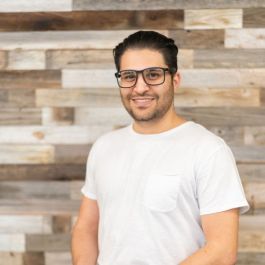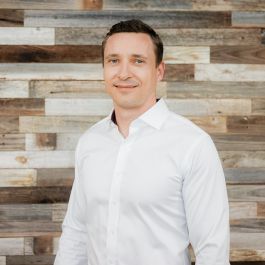Can something be too efficient?
If so, that’s news to Bobby Hakimi, co-founder and chief product officer at Convoso, a cloud-based call center software company.
Hakimi and his team have built an application to make outbound call center agents’ lives more efficient by automatically dialing numbers in a strategic cadence while weeding out disconnected numbers. By his estimate, Convoso allows users to connect with hundreds of customers a day — a far cry from the few they could reach by dialing manually.
But why stop there?
As the world changed dramatically in 2020, Convoso’s tech team was eyeing a change of its own. The next logical step in continuing its automation plans, the team agreed, was introducing a much more advanced AI product over the next few months.
This move would not only mark a significant foray into cutting-edge tech, but would also open many doors in terms of what the company would be capable of in the future, Hakimi said.
“We’re looking to go into other verticals,” Hakimi said. “Right now, we’re primarily outbound, but we’re looking to get into the inbound market and explore other areas where we can utilize our technology.”
To accommodate those lofty goals, the company said its tech team doubled its headcount in a move that included hiring new VP of Engineering Marin Sarbulescu. Even with the influx of new talent, Convoso’s team has a healthy mix of veteran techies who Sarbulescu says “know every nook and cranny” of the application — like Chief Architect Phi Le.
Affectionately known as “Uncle Phi” to his team, he’s spent the last seven years turning Convoso’s dreams into technical requirements. While the new hires help support the company’s vision, success also boils down to the tools they’re using.
“We don’t work on tech that’s outdated,” Le said.
Built In LA connected with the trio to find out what the leaders have planned for 2021, how their teams can expect to see their careers flourish and why they can’t get enough of the tech they’re building.
“We’re not just developing features,” Sarbulescu said. “We’re solving issues every day.”

What does 2021 have in store for the company?
Co-founder and Chief Product Officer Bobby Hakimi: Our customers are typically lead generation call centers who are contacting people interested in their services. We are now transitioning to building bots that can have intelligent conversations with people. We’re moving into a direction where any company can take out some of the tedious work of building, training, order-taking and more. There’s a world of possibilities that this product can do.
These voice engines can communicate with people through text, email or phone calls and can more effectively do the job of a human. These robots can talk, understand full sentences and put out specific information. When we take the tedious work away from our customers’ employees, they can be free to have more meaningful interactions. That’s our future.
VP of Engineering Marin Sarbulescu: Here at Convoso, engineers can see the tangible, clear impact of what they’re doing. We’re not just developing features, we’re solving issues every day. We work in an industry where there’s quite a bit of regulation and we have to accommodate those regulations while still being successful in what we’re doing. That requires continuous innovation.
What tech do you use, and what does that allow your team to do?
Chief Architect Phi Le: We use PhP, Node.js and JavaScript for the front end, and our database is MySQL. For heavy lifting, we use Pearl and are now transitioning to Python. It’s a LAMP stack, in general. Python is one of the most used languages for developing, and Node.js is the fourth or fifth most-used environment. We stay up to date.
Sarbulescu: I’m proud of my PhP roots. I think it’s a great language, has been used forever, is easy to pick up and there’s a huge pool of developers that are available to support your projects. It’s worked very well for our purposes. Now, we’re adding some really cutting-edge tools to our stack and are transitioning to newer technology that’s a better fit for what we need. In general, we’re not married to anything. We look at what software is mature enough, has a following we can work with and serves our purposes.
A tech stack is just a tech stack — it’s what you do with it that matters.”
Hakimi: A tech stack is just a tech stack — it’s what you do with it that matters. And what we’re doing is exciting and is helping engineers grow their careers.
We work on a low-latency, high traffic application that’s very complex. We play with big data and algorithms. Engineers get to learn how to architect by having the ability to access as much of the codebase as they want. If someone works on a really small part of a project, like at a big company, they’ll never really have the ability to understand a bigger-scale application and know what to watch out for.

Let’s dive in deeper about what growth looks like on the engineering team.
Sarbulescu: There’s a lot of flexibility, which is one of the things I love so much about the company. There’s opportunity to move laterally. If after a while, an employee becomes passionate about an area, they can move in that direction. There’s also room for promotions in the company. When someone does something significant, they can clearly see that they had an impact. Recognition combined with opportunity is really important.
We make sure we have the right people with the skills and expertise they need to jump into projects. But we also have engineers that don’t necessarily have AI experience, for example, but are interested in trying it out. For them, we have a career development path. Let’s say there’s an AI project coming up in three or six months. We can give interested engineers a head start by having them take some courses online and watch some videos so they can walk before jumping into the main project.
What does the onboarding process look like?
What are some obstacles your team has overcome in the last year, and what did you learn?
Le: We went through and fixed issues of outside impairment and figured out how to improve our application for our users. For those with choppy internet who had to suddenly work from home, they might not have had the proper tools and may have only had access to a PC laptop. So we’ve been able to get them back to work and even save some call centers from going out of business because before, maybe their agents couldn’t work from home effectively.
Hakimi: We’ve never had an operation where everyone was working from home, but we learned that it was possible for us to be remote. That’s opened up a whole pool of talent nationwide.
There were also so many technical problems we solved. I remember feeling the pain of going through those problems, then succeeding in beating our obstacles. For example, we’ve increased our stability in the software, improved our AI in terms of scalability and now understand more of the market around AI. Growing into that space was a huge accomplishment.










